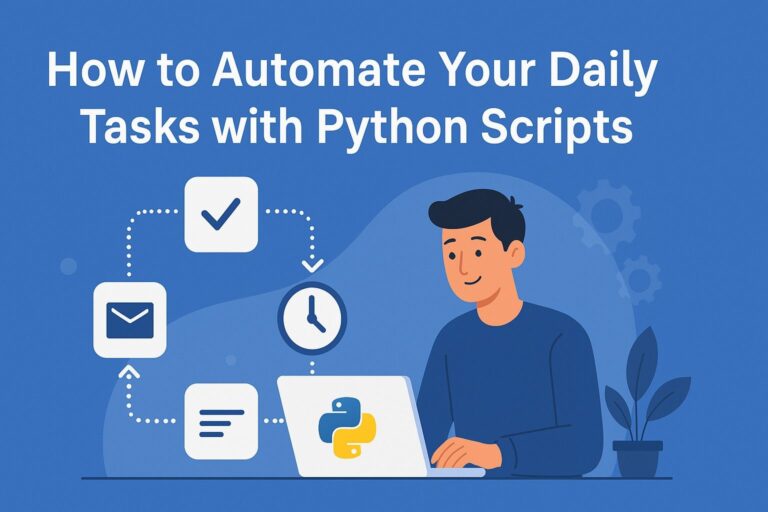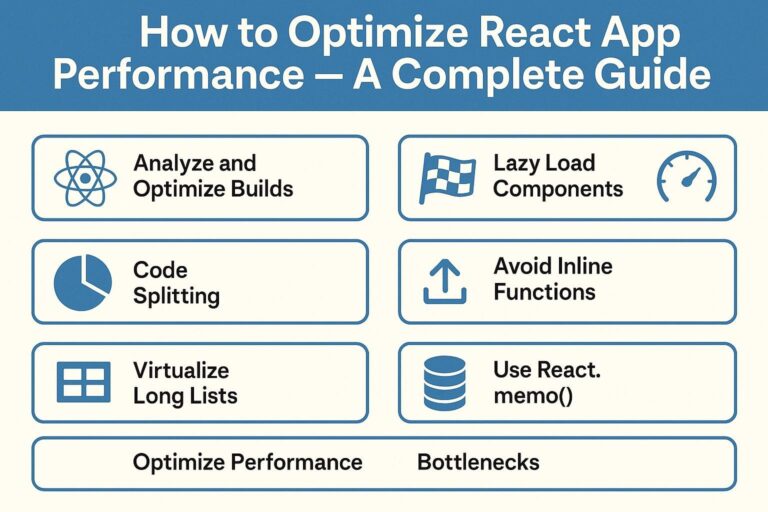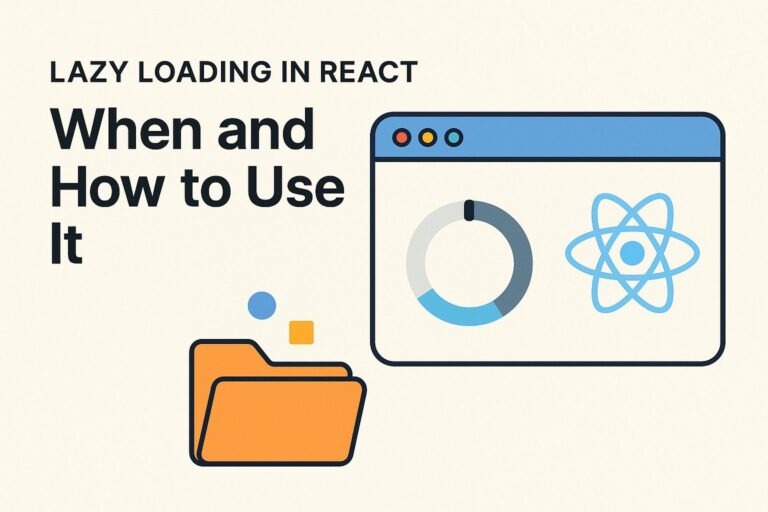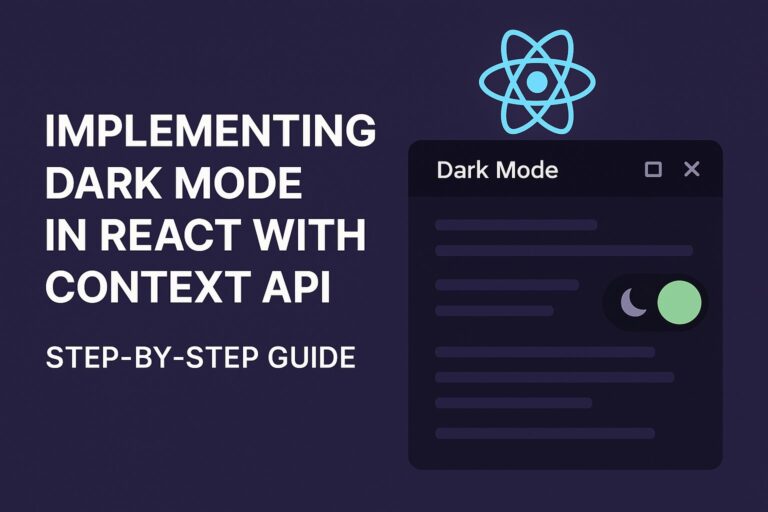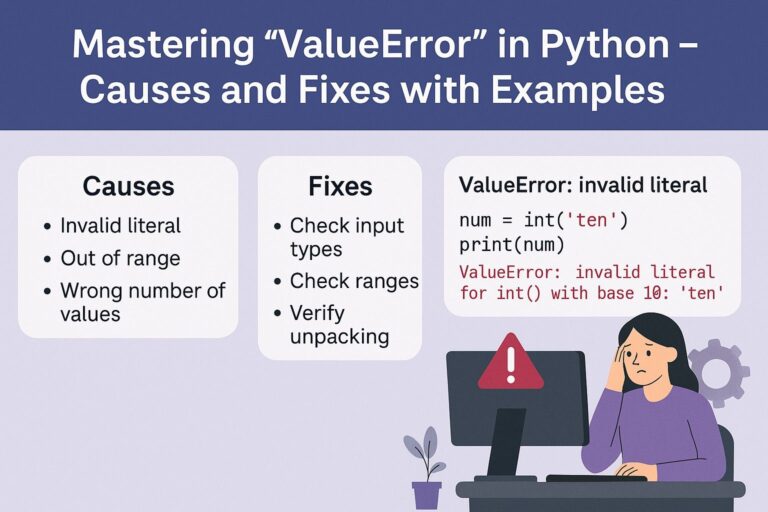
Python is widely regarded as the language of choice for artificial intelligence (AI) development. Its simplicity, readability, and vast ecosystem of libraries make it ideal for building AI-powered applications, even for beginners.
In this step-by-step guide, you will learn how to build your first AI app using Python — from project planning to model training, API creation, frontend integration, and deployment.
Step 1: Define the Objective of Your AI App
Before writing any code, determine the core purpose of your AI application. This ensures you choose the right dataset, model, and evaluation metrics.
Common AI App Ideas:
- Predict housing prices based on features like location and size
- Classify emails as spam or not spam
- Recognize handwritten digits
- Detect fake news articles
- Create a chatbot for answering FAQs
Example Goal: Predict housing prices based on multiple numerical features using a regression model.
Step 2: Set Up Your Development Environment
You’ll need to prepare your system with the appropriate tools and libraries.
Install Python (if not installed):
Download from the official site: https://www.python.org/downloads/
Recommended Tools:
- IDE: VS Code, PyCharm, or Jupyter Notebook
- Virtual Environment (to manage dependencies):
venvorconda
Create a Virtual Environment:
python -m venv venv
source venv/bin/activate # On macOS/Linux
venv\Scripts\activate # On Windows
Install Required Libraries:
pip install numpy pandas matplotlib scikit-learn flask
Optional for Advanced AI:
pip install tensorflow keras transformers openai
Step 3: Load and Explore the Dataset
Choose a suitable dataset. For regression, we can use the California Housing Dataset.
from sklearn.datasets import fetch_california_housing
import pandas as pd
data = fetch_california_housing()
df = pd.DataFrame(data.data, columns=data.feature_names)
df['Target'] = data.target
print(df.describe())
Key Tasks:
- Understand the distribution and relationships between features
- Visualize data using histograms, scatter plots, and correlation heatmaps
- Check for missing values and outliers
Step 4: Prepare the Data for Modeling
Prepare the data to ensure your model performs well.
Preprocessing Steps:
- Handle missing values (
df.dropna()orfillna()) - Normalize or scale features (
MinMaxScalerorStandardScaler) - Split data into training and test sets
from sklearn.model_selection import train_test_split
from sklearn.preprocessing import StandardScaler
X = df.drop('Target', axis=1)
y = df['Target']
scaler = StandardScaler()
X_scaled = scaler.fit_transform(X)
X_train, X_test, y_train, y_test = train_test_split(X_scaled, y, test_size=0.2, random_state=42)
Step 5: Train a Machine Learning Model
Train a machine learning model using scikit-learn.
from sklearn.linear_model import LinearRegression
from sklearn.metrics import mean_squared_error, r2_score
model = LinearRegression()
model.fit(X_train, y_train)
y_pred = model.predict(X_test)
print("R^2 Score:", r2_score(y_test, y_pred))
print("MSE:", mean_squared_error(y_test, y_pred))
Tips:
- Compare multiple models (Decision Trees, Random Forests, Gradient Boosting)
- Use cross-validation for better performance evaluation
Step 6: Save the Trained Model
Persist your model so you can load and use it in a web application.
import pickle
with open('model.pkl', 'wb') as f:
pickle.dump(model, f)
with open('scaler.pkl', 'wb') as f:
pickle.dump(scaler, f)
Step 7: Build a REST API Using Flask
Create a simple Flask API to serve your model.
app.py:
from flask import Flask, request, jsonify
import numpy as np
import pickle
app = Flask(__name__)
model = pickle.load(open('model.pkl', 'rb'))
scaler = pickle.load(open('scaler.pkl', 'rb'))
@app.route('/predict', methods=['POST'])
def predict():
data = request.get_json()
features = np.array(data['features']).reshape(1, -1)
scaled_features = scaler.transform(features)
prediction = model.predict(scaled_features)[0]
return jsonify({'prediction': float(prediction)})
if __name__ == '__main__':
app.run(debug=True)
Test the API using Postman or curl:
POST http://localhost:5000/predict
{
"features": [8.3252, 41.0, 6.984127, 1.02381, 322.0, 2.555556, 37.88, -122.23]
}
Step 8: Add a Web Interface (Optional)
Create a simple HTML frontend to collect user input.
templates/index.html:
<form action="/predict" method="post">
<input type="text" name="feature1" placeholder="Feature 1">
<input type="text" name="feature2" placeholder="Feature 2">
<!-- Add other inputs -->
<input type="submit" value="Predict">
</form>
Update Flask to render templates and handle form submission.
from flask import render_template
@app.route('/')
def home():
return render_template('index.html')
Step 9: Deploy Your AI App
You can deploy your application to a hosting platform so others can use it online.
Deployment Platforms:
- Render: Simple GitHub integration
- Heroku: Easy setup with a
Procfileandrequirements.txt - AWS Elastic Beanstalk: Scalable, production-ready
- Railway: Easy backend deployment with a free tier
Deployment Steps (for Render):
- Push your code to GitHub
- Create a new web service on Render
- Add:
requirements.txtProcfile: makefileCopyEditweb: gunicorn app:app
- Deploy and test the live URL
Step 10: Alternative — Build with Streamlit
If you want a simpler frontend with less code, use Streamlit.
pip install streamlit
app.py:
import streamlit as st
import numpy as np
import pickle
model = pickle.load(open('model.pkl', 'rb'))
scaler = pickle.load(open('scaler.pkl', 'rb'))
st.title("House Price Predictor")
f1 = st.number_input("Feature 1")
f2 = st.number_input("Feature 2")
# Add all features
if st.button("Predict"):
input_data = np.array([[f1, f2, ...]])
input_scaled = scaler.transform(input_data)
prediction = model.predict(input_scaled)[0]
st.write("Predicted Price:", prediction)
Run the app:
streamlit run app.py
Final Thoughts
Building your first AI application using Python combines multiple skills: data processing, machine learning, web development, and deployment. By breaking the process into manageable steps, you can create a fully functional AI-powered tool that solves real-world problems.
Start with simple use cases, expand your knowledge by trying different models, and gradually enhance your app with more features such as authentication, cloud integration, or advanced deep learning models.

I’m Shreyash Mhashilkar, an IT professional who loves building user-friendly, scalable digital solutions. Outside of coding, I enjoy researching new places, learning about different cultures, and exploring how technology shapes the way we live and travel. I share my experiences and discoveries to help others explore new places, cultures, and ideas with curiosity and enthusiasm.

